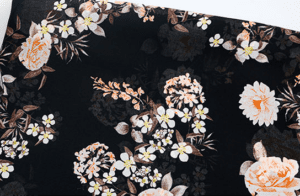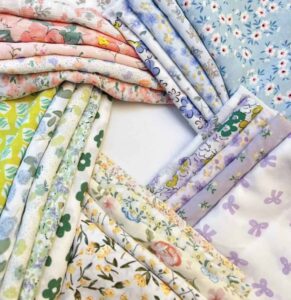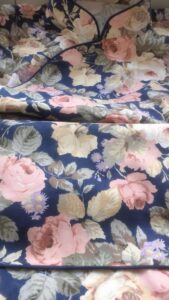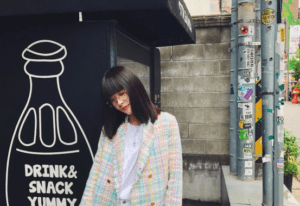What is the brand goods and market goods?
Brand goods, generally through the formal channels of circulation, compared to market goods, quality control is more standardized, the pursuit of fabric, workmanship and technology relatively more than the style, especially to do high-end quality products, more raw materials, technology, pattern innovation.
Market goods refers to products circulated mainly through wholesale markets, regional small retailers, street stores, online non-brand online stores; the requirements for style far exceed the pursuit of fabric and manufacturing process, usually developing a large number of styles in the early stage, and then filtering the styles through the second order meeting, factory order meeting, order data from major exhibitions, combined with the emergence of industry explosive models later. It is difficult to enter the proper department store channel or shopping center.

How to distinguish between brand goods and market goods?
Distinguish from the hangtag, see whether all the various items are printed, whether all for printing, but the inspection seal must be manually stamped shall not be printed, and the entire hangtag is not allowed to modify the place.
Most of the brand goods have a formal quality control system, the quality is relatively stable, batch differences are small, samples and large differences relative to the market goods are not large, hangtags, wash wheat, etc. are more standardized. Relative to the brand goods, the market goods are the opposite.
What is a first-line, second-line brand, how to distinguish?
In fact, first-line brands and second-line brands are more difficult to distinguish, and not well-known brands are a line, plus the passage of time will have interchangeable.
First-line: international and domestic well-known, high public awareness rate; that is, by the mall deliberately pull the monopoly of the brand is a first-line brand. Second-line: relative to the first-line brands, visibility and price point is inferior to the brand.

What is the “Beijing School, Hangzhou School, Han School” and so on?
All are very early called, nostalgia is okay.
Beijing School: professional clothing, now developed for professional casual (business casual), now the Beijing School enterprises are gradually polarization (prosperity and extinction), their products are mainly sold in the north, that is, the three northern regions, these brands are basically in a monopoly, new brands are difficult to form, and few brands to venture into the ranks of the Beijing School;.
Hang School: the main characteristics of the elegant clothes, girls’ clothes, representative brands such as Qiushui Eren; Hang School clothing market is large, many brands.
Han School: similar to the Beijing School (career wear as a strong point), Wuhan area clothing enterprises about 1500, but Wuhan wages are lower, so designers to work in Guangzhou, Shenzhen and Hangzhou, a lot.
What is “Guangzhou goods, Shenzhen goods, Fujian goods”, etc.?
The same is also called a long time ago.
Guangzhou goods: including Dalang Mao Suan, Xintang denim, Humen wholesale, white horse black horse new earth Liuhua and other markets are nationally known market; imitation innovation ability is very strong, rely on imitation version to start. Brand these years is also on the rise, compared to Shenzhen is still some gap.
Shenzhen goods: brand high-grade, elegant, featuring high-grade business casual (non-occupational clothing), many well-known brands, Shenzhen also focus on agents, manufacturers rarely expand directly, the market goods are dominated by Nanyou, Nanyou will also contribute to the brand.
Fujian goods: high-grade men’s clothing as a feature (including business formal and casual), women’s clothing such as Baozhi; Fujian brand, especially Jinjiang brand strength, sound network, focus on the image.
Root source of goods are in where?
Cashmere wool sweater Yangtze River Delta go to Puyuan, the Pearl River Delta go to Dongguan Dalang. Fur go to Jiaxing Haining. Down jacket goes to Pinghu. Jeans go to Guangzhou. Original go to Shenzhen Nanliu. Korean goods go to Qingdao Jimo, South Korea does not have light industry, many sweatshirt sweatpants exports are all Jimo. High imitation bag clothing to Guangzhou, shoes to Putian.

What is “model number, color number, model number”?
Model number: the manufacturer’s internal number of the model.
Color code: the internal code of the color.
Model number: generally S/M/L/XL/XXL, etc. It is forbidden to divide the AB version of the goods in shopping malls, and there is also a model format of 64, 67, 70, etc. for waist, 26, 27, etc. for hip, 48, 50, etc. for collar, etc.
What do you mean by “pattern, plate, and release”?
Pattern: All garments must be patterned (paper pattern) before cutting, the pattern determines the appearance of the garment, whether it can reflect the designer’s intention, whether it fits, etc.
Layout: look at the diagram to understand the designer’s intention and make a paper pattern.
Release code: from small to large, must not go out of shape.
What is the meaning of specification and size?
Size refers to the dimensional parameters of each part of the garment, such as the bust, waist, hip, garment length, trouser length, sleeve length and other important parts of the garment, and is the dimensional data obtained from direct measurement of the garment.
The size refers to the body height and circumference for which the garment is worn. No. refers to the body’s height, is the basis for the design and purchase of clothing length; type refers to the body’s upper body chest or lower body waist / hip circumference, is the basis for the design and purchase of clothing fat and thin.
For example, the collar circumference 37cm, shoulder width 45.2cm, chest circumference 102cm, back length 73cm, sleeve length 24cm, are the specifications of the garment, is the size of the garment parts data; and 160/80A is the number of the garment, said the garment is suitable for people with a normal body type of 160cm in height and 80cm in chest circumference to wear.

What is the difference between specification and size?
The size is the basis for deciding the size and fatness of the garment, and is the basis for the creation of the specification size, but the size is not the same as the specification.
For example, clothing for height 160cm (No.), chest circumference of 80cm (type) of the human body wear, while the actual size of the chest specification of clothing is 102cm, the actual chest specification of clothing more than 22cm (102cm – 80cm = 22cm) is the amount of comfort required by the human body to wear put.
So the number and specifications are both indicators of the size of the expression of clothing, but the object to which they point is not the same, so it must be clearly identified in order to accurately express the size of the finished garment.
children’s clothing and adult clothing size difference?
Apparel products mainly use the size to indicate the size of the product, children’s clothing and adult clothing size system differences are mainly reflected in the difference in the value of the grade. 155cm adult clothing height to 5cm grade, chest to 4cm grade, waist to 2cm grade. Infants and children’s clothing height sub-grade value with the growth of age has changed.
Height of 52cm to 80cm infant and children’s clothing, height to 7cm staging.
Height 80cm ~ 130cm children’s clothing, height to 10cm stall.
Height 135cm ~ 160cm boys’ clothing and 135cm ~ 155cm girls’ clothing, height to 5cm stall.
Infants and children’s clothing, chest circumference of 4cm, waist circumference of 3cm.

knitted garments and woven garment size difference?
Woven and knitted garments can be referred to GB/T 1335.1-3 implementation of the garment number, for adult clothing to mark the garment number and body type, such as 160/84A.
Knitted underwear clothing products can refer to GB/T 6411 implementation of the number of adults and children’s number (height) and type (bust / hip) are graded by 5cm, consisting of 5-5 series, such as 170/90, 175/95.
For some knitted products, not greatly affected by height, you can not mark the height, only mark the wearable human chest, such as tops marked 95, it means that suitable for people with a chest circumference of about 95cm wear. Some elastic knitted garment products, its wearable range is wider, can be marked its wearable range, such as tops marked 95cm ~ 105cm, said suitable for people with a chest circumference of 95cm ~ 105cm wear.
What are the standards for garment hangtags and washers? What is “GB, FZ, B class”?
GB: national standards; (GB is the first letter of the national standard pinyin)
FZ: garment industry standards; (FZ for the initials of the textile pinyin)
Class B: formaldehyde content standards, Class B represents direct contact with skin.
Hangtag content.
The name and address of the manufacturer
Product name
number type
Fiber composition and content
Washing method
Product execution standard number
Product quality grade
Product quality certificate
In addition: the content of the hangtag and the wash label must be consistent, i.e. the inner and outer label must be consistent.
What is the general process of a garment launch?
Develop plan, market forecast, trend analysis, material selection (fabric and auxiliary materials), design, drawing, modification, order large sample, select auxiliary (matching) materials, fabric testing, board room board making, sample garment, modification, technical room writing process, fixing materials, fabric testing, pushing board, pre-shrinkage, destructive test, carrier bed, first piece, identification, auxiliary materials library color matching and collating materials, assembly line, professional machinery, after finishing, inspection room, hanging hang tag, finished product library , full number, out of storage, feedback information, modification, re-marketing.
What is originality? What is imitation and piracy?
Original brand or original style: refers to the style that is unique and can rarely be imitated by other brands, such as exception, Jiangnan Cloth, etc.
Imitation, piracy: imitating others’ styles from the basic style, style and pattern is called imitation, which is used by many brands; being exactly the same as others’ styles from the fabric, style and pattern is called piracy.

How long is the life cycle of a garment?
In terms of the life cycle of fashion in general, there is a customary law in the industry that depreciates 0.7% per day since the date of launch. Of course, this is only an approximate percentage and does not represent the whole picture.
For example, the seven-part sleeve of spring fashion, it has a fairly short life cycle, generally 10 days for wholesale and 1 month for retail. Most seasonal fashions have a life cycle of one month at wholesale and half a season at retail; among the four seasons of the year, spring and autumn clothes have the shortest life cycle, summer and winter clothes are relatively long; denim, formal wear, etc. have a relatively long life cycle because there are no particularly popular factors.
Market segmentation industry knowledge
What do you mean by “market segmentation” and why do you need it?
Before the 1980s: there was no market segmentation, only a division of labor between children’s and adult clothing.
80s: the division of labor between men’s and women’s clothing emerged, along with the emergence of professional suit factories.
1990s: brands began to appear, and specialized divisions of labor emerged for sweaters, shirts, dresses, pants, etc.
After 2000s: the market is extremely subdivided, like casual wear is gradually divided into professional casual, ethnic casual, home casual, etc.
After 2010: continued segmentation ……
Why do we need market segmentation: because only market segmentation can be more professional. Market positioning segmentation does not mean that the profit side of a brand shrinks, but on the contrary means that the brand is more professional and will be more competitive.

What is distribution?
Distribution: use or do not use the brand, in the form of selection of goods from the brand, no exchange or less exchange of goods, money and goods, do not need the brand’s other flattering services, this form of the brand is more trouble-free.
What is joining?
Join: use the brand image, no wholesale rights, no wholesale discounts, buy goods in the form of full inventory, enjoy the additional services of the brand merchant such as exchange, image display, training, etc.
What is an agent?
Agent: you can use the brand image, have the right to wholesale and the right to recruit franchisees, enjoy discounts lower than those of franchisees, and enjoy the policy of relatively more geographical protection.
What is escrow?
Escrow: simply put, it is the pressure of money on behalf of the sale, only the larger scale, pay attention to the terminal image of the brand will take the form of escrow. Small brands that take the form of trusteeship, the purpose will only be eager to expand the market, occupy the market by any means.
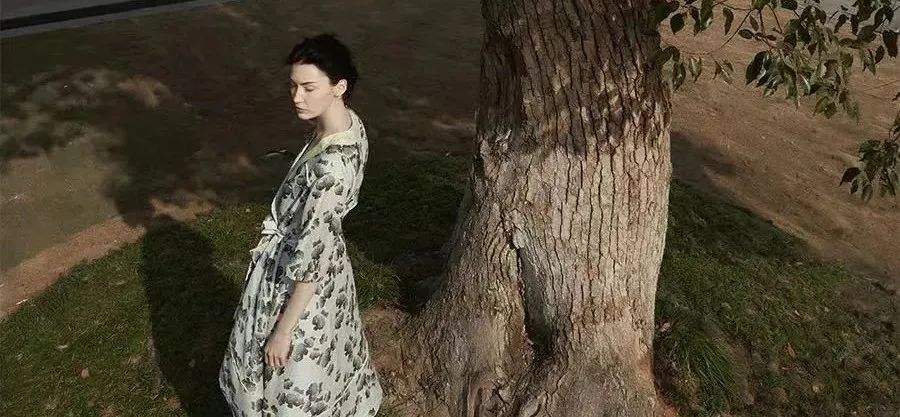
What does “territorial protection” mean, why do we need territorial protection, and what does “tampering (stringing)” mean?
After a brand owner gives the agency or sales right of a certain area to a certain customer, it cannot supply to anyone in any form to sell. The purpose is to avoid malicious competition to the detriment of the brand, mainly to avoid playing price war.
Example: an agent into the price of 35 discount, the external wholesale for 45 discount, retail 20% discount. And others in order to compete or play across this brand, to the same discount after buying with 40% off wholesale, 50% off sales. Doing so not only affects each other’s sales but also damages the image of the brand. This result is very taboo for the brand.
What is bulk goods? Why do brands want to wholesale bulk goods?
Bulk goods on the brand to supply customers who are not franchisees, each time there may be only one paragraph, a few pieces of goods; purpose: trial payment, return of funds, clearance, etc.
Why does a manufacturer have two or even several brands?
A brand is not doing well and needs to launch another brand to save the market.
A brand that has operated in a certain business to the point where it cannot be surpassed and wishes to try other businesses.
a brand eager to expand when it wants to attract franchisees with different styles of multiple brands.

What is virtual operation? What is sales outsourcing?
The simplest explanation of virtual operation is “laying eggs by borrowing chickens”.
Brand owners do not have their own processing plants, or even marketing teams, or even product development, they outsource all these tasks to other companies and only do the promotion of the brand themselves. All the terminal sales are done by the franchisees.
The most typical ones using this model are Metersbonwe, Nike, etc. (early).
How do the profits of direct operation compare with those of franchising, hosting and wholesale?
Direct operation (retail) is highly profitable, but requires very high financial strength, philosophy and management of the company.
custodianship is also highly profitable, but similar to retail, and also very strong requirements for company strength and other items.
Wholesale, franchise profit is average, but very fast return, as adopted by most companies.
Business format classification?
Type I shopping malls: generally in the form of high deductions and high underwriting.
Type II malls: take the form of low deductions and high underwriting.
Type III markets: Generally take the form of rent.
What are the low and high seasons for clothing?
High retail season: April-June low, October – before the Spring Festival each year.
Low retail season: 3 months after Chinese New Year; July-September.
Wholesale peak season: March-May and September-November every year
Wholesale off-season: 2 months after Chinese New Year, June-August, around New Year.

What does “first order” mean?
The first order is the franchisee’s first purchase from the brand, and the first purchase of each season.
What do you mean by “chase single (replenishment)”?
After the single is a style of the first purchase, feel good to sell the case of the second purchase.
What do you mean by “selection”?
Selection of goods is the brand or distributor from the brand to select some styles, generally speaking, the selection of goods transfer ratio is much lower than the laying of goods.
What do you mean by “store”?
Store is the brand does not allow the franchisee to select goods, directly to the franchisee’s form of goods, the transfer ratio is higher.
What is called a number?
A lot of number: each style of clothing from small to large size of each model called a lot of number, also called a set of number.

What is meant by “a tray of goods”?
A plate of goods means that the goods are relatively complete, such as a fashion company’s plate of goods, must be distinguished according to color, each color includes tops, pants, shirts and many other series; only the goods into a plate of the company can afford to recruit franchisees, because it must ensure that franchisees in the mall not to be out of stock, or the lack of an important series and lose the opportunity to profit.
The proportion of the apparel industry transfer?
Generally divided into several ratios: 100% transfer (inter-seasonal); 100% in-season; the first single 100% chase single not transfer; end of season transfer 10%; the first single 50% chase single not transfer and so on several ways. Of course there are exceptions.
What do you mean by “OEM”
Labeling: It is when a processor does not have its own brand and produces products for other brands. This approach is used by many brands; labeling is mainly an aspect of virtual business practiced by brands for rapid expansion.
What does rebranding mean?
Re-labeling: It is when the brand owner goes directly to the market to bring the goods of other brands, changes the trademark and sells them as his own goods. Changing the label behavior is purely forced by the market competition, because now the clothing focus on more styles, less quantity, and a brand if the strength is limited, simply can not meet the needs of customers and shopping malls, so you must go to take other people’s goods to change the label to cope with customers and shopping malls.
What are the six certificates of clothing brand?
Business license (Business and Industry Bureau)
State tax registration certificate (National Tax Bureau)
Land tax registration certificate (Local Tax Bureau)
Organization Code Certificate (Technical Supervision Bureau)
Bank account opening license (People’s Bank)
Trademark registration certificate (State Administration for Industry and Commerce)

What is called “tail list”, tail goods”?
Tailor-made: or withholding fabric more processing out, or substandard products must be dealt with, or steal the commissioned processor’s version to make pirated; this tailor-made generally large number and size complete, the price is not too low.
Tailings: basically are inventory products, generally appear at the end of the season in each season. This kind of tail goods are generally out of size goods, color size is seriously incomplete, the price is relatively low, and the quality and authentic products without any difference.
What do you mean by inventory? How does inventory come into existence?
Inventory is divided into reasonable inventory and unreasonable inventory. It is also called benign inventory and malignant inventory.
Reasonable inventory is the one that sells very well and must keep a certain amount of inventory as a backup, and unreasonable inventory is the one that sells out. The reasons for malignant inventory are: wrong forecast, unfavorable sales, large starting quantity, and few sales channels.
How to solve the inventory?
Before: stock up and sell next year, one style for years.
Now: discount (retail and wholesale), tailing, opening special dump stores (including outlet and online), changing brands to dump.



















